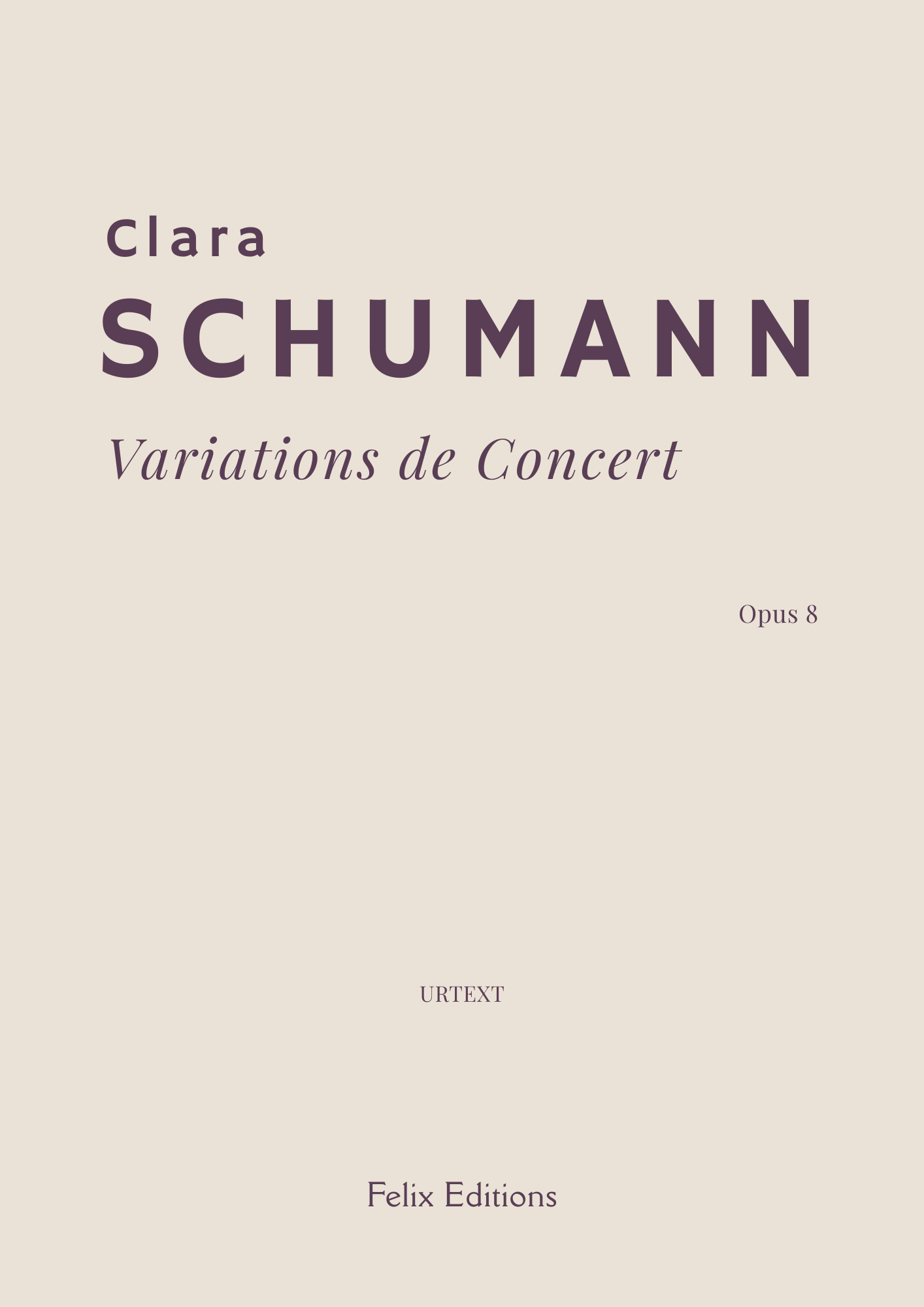Schumann, Clara (née Wieck) (1819 – 1896)
Variations de Concert
SKU:FD013
This is a downloadable product. Looking for our print edition on premium paper? Check out C. Schumann: Variations de Concert.
Couldn't load pickup availability
Description
With her Variations de Concert (1837), Clara Schumann created one of the most formidable virtuoso works of her generation. Composed at age eighteen and premiered in Vienna, the piece rivals the bravura fantasies of Liszt and Thalberg in scope and technical challenge. Based on a cavatina from Bellini’s Il pirata, the work unfolds in a dramatic arc: from a solemn introduction and lyrical theme to four increasingly complex variations and a fiery finale. A striking Adagio quasi fantasia at the centre provides expressive contrast with its sweeping arpeggios and operatic tone.
Dedicated to Adolf von Henselt, the work speaks to Clara’s engagement with the concert tradition and her command of large forms. Each variation poses its own pianistic demands—leaps, double notes, hand crossings—yet all are anchored in expressive intent. This Urtext edition brings to light a work of extraordinary ambition, and a testament to the technical and creative powers of a young composer determined to claim her place on the European stage.
Quick Overview
- Composer: Clara Schumann (1819–1896)
- Edition: Urtext (FE013)
- File Format: PDF
- Contents: 21 pages total (3 pages introduction and source commentary, 18 pages music)
- Difficulty: Level 10 / 10
- Editor: Martijn Vromans
- Pages: 18 + III pages.
About the Composer
About the Composer
Clara Schumann (1819–1896) was a pioneering German pianist and composer who left a profound mark on 19th-century musical life. Her works combine remarkable virtuosity with deep emotional insight. She explored the full sonic potential of the piano and introduced innovative approaches to pianistic technique. Many of her pieces carry an undertone of melancholy, subtly woven into a style of refined expressiveness.
Contents
Contents
- Introduction
- Variations de Concert, Op. 8
- Critical Commentary
Share




-
Premium Editions
Our paper editions are pleasing to the eye: gorgeous and heavy cream paper produced in an environmentally friendly manner. We print our albums ourselves and use pigmented ink instead of toner. Due to the ink soaking into the paper, a beautiful print is created. All our albums are bound with a steel binding spine, so the albums last a long time and stand perfectly flat on the piano.




